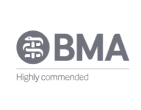How to take a great headache history
Signs and symptoms of headaches
Often, there may be symptoms before, during, or after the head pain, which the patient does not associate with their headaches.
These symptoms or signs of headaches may include any of the following:
- Aura symptoms
- Photosensitivity
- Phonosensitivity
- Nausea
- Scalp tenderness
- Pain with chewing
Identifying headache triggers
A great history allows you to tease out the triggers which are responsible for your patient’s headaches. If the patient can recognize their headache triggers, they might be able to avoid them, thus preventing the headaches.
Here’s a list of common headache triggers:
- Menstruation
- Stress
- Skipping meals
- Changes in sleep patterns
- Changes in weather
- Environmental odors
- Lights
- Chemicals
- Coughing
- Bending over
- Certain foods or beverages
Other important information to obtain from your patient
Medications
It is important to also ask about pharmacologic as well as nonpharmacologic factors which alter the headache course. When asking about headache medications, be sure to inquire about frequency with which it is taken, dosage, as well as efficacy.
Find out how headaches have been treated in the past, including the doses and types of medications used, to aid you in developing an updated treatment plan for the patient.
Prior diagnostic testing
Ask about prior diagnostic testing. If you can obtain these test results, it can accelerate your diagnosis while avoiding unnecessary expense and can confirm your patient’s description of what was found. It is particularly important to know if they have had a lumbar puncture which can lead to low cerebrospinal fluid (CSF) pressure and a headache.
Social history
A patient’s marital status, work, education, and outside activities may provide important clues for the source of the headache.
Family history
Family history is important since many headache disorders are familial. For instance, almost 60% of those suffering from migraines have a parent with a history of migraine, and as many as 80% have a first degree relative with migraine.
It is best to inquire specifically about the headache characteristics of family members, if the patient can provide such detail, but it’s even better if the family member can give details in person.
Headache history
Seeking information about prior headaches and exploring differences from the current presentation might reveal that the patient now has similar headaches with premonitory symptoms or an aura which is unique for them.
Past medical history
Assess if the patient has had cancer, stroke, head injury, other trauma, sinus disease or dental disease. Human immunodeficiency virus (HIV) history should be noted as it can cause headaches with intracranial infections, such as fungal meningitis or tuberculosis, and with malignancy, such as central nervous system lymphoma.
Epilepsy may be associated with symptoms that mimic migraine aura and seizure events can provoke headaches, called the ictal epileptic headache.
Impact on life
Don’t neglect how the headaches affect the patient’s work, overall function, and their activities.
SNOOPP
And, don’t forget to review the red flags with your patient to rule out potentially dangerous causes of secondary headaches according to SNOOPP (Systemic signs and symptoms, Neurologic abnormalities, sudden Onset, Older patient, Progressive, and P word characteristics: positional and papilledema).
Overall, conducting a thorough history of the patient’s headaches will give you a better idea of the possible causes and treatments.
Become a great clinician with our video courses and workshops
Recommended reading
-
Rizzoli, P and Mullally, WJ. 2018. Headache. Am J Med. 131: 17–25. PMID: 28939471
-
Turner, DP, Jchtay, I, Lebowitz, A, et al. 2018. Perceived migraine triggers. Practical Neurology. 17: 37–40. https://practicalneurology.com
-
Young, WB, 2018. The Stigma of Migraine. Practical Neurology. 17: 23–26. https://practicalneurology.com
-
Young, WB, Silberstein, SD, Nahas, SJ, et al. 2011. Jefferson Headache Manual. New York: Demos Medical Publishing.
Become an expert



